Once a knee replacement surgery is performed, the patient must start exercising the knee and leg muscles for the overall success of the surgery. This is crucial because exercise helps in increasing the motion in the knee, helps the tendons to work, encourages regeneration of tendon cells, rebuilds muscle strength and prevents stiffness. While undergoing physiotherapy, patients can do a variety of standard exercises that can help in proper recovery after the surgery. These exercises can be incorporated in daily routine and must be performed under professional guidance so that proper precautionary measures are undertaken.

9 Physiotherapy exercises after knee replacement surgery
1. Ankle pumps and circles

During the first day of your knee exercising routine, you must start with performing ankle pumps and circles. This exercise must be repeated 10 times each day for at least one week for maximum results. To perform this exercise, you must first bend your ankles up while pulling your toes towards yourself. Now bend the ankles down and point the toes away from you. Rotate the foot clockwise first and then anticlockwise while keeping the toes pointed towards ceiling. The exercise must be performed during the morning hours as it helps to warm up your legs and must be performed each day for at least one week. As a precaution, consult your doctor about how you should lie while performed the exercise. During the initial stages, you may feel it difficult to rotate your legs. So, after every two rotations, rest your legs for about 5 seconds.
2. Thigh squeezes
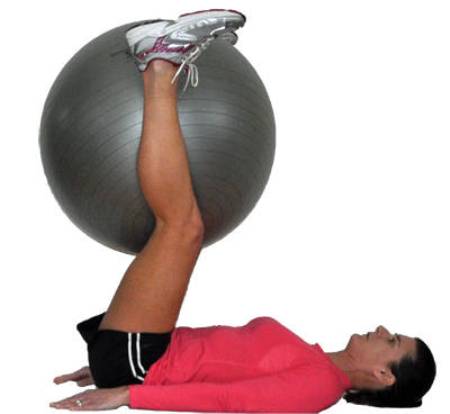
The second exercise on the first day should be thigh squeezes. Thigh squeezes should ideally be performed after ankle pumps and circles. They must be performed in a set of 10 repetitions and the intensity must be increased only after one week. For this exercise, start by tightening the muscles in the front area of your thighs. Push the back of the knee down towards the back. Hold this position for five seconds and repeat. As a precaution, don’t perform this exercise on a very soft mattress as it can cause pain in your lower back. The exercise will help you take control of your upper thighs while simultaneously encouraging your knee for using tendons to support your thigh’s weight. You may initially feel it challenging to push the back of your knees while tightening thighs, but under a professional physiotherapist’s guidance, the exercise will become easier with each repetition as the muscles of your knees will start to lose their stiffness.
3. Heel slides

This is the third exercise in the series of physiotherapy exercises that must be incorporated in your daily routine. To perform this exercise, first bend you hip and your knees by sliding your heel bringing it towards your buttocks. Make sure that the heel rests on the bed. Now, slide the heel back to the starting position. Do remember to point the knee cap to the ceiling while performing this exercise. At times, it may be difficult to slide the heel while performing this exercise. So, you can ask your physiotherapist to provide you a cookie sheet which will make sliding easier. This exercise should be repeated 10 times. After a period of one week, the intensity should be increased to 20. Keep on performing this exercise even after you are discharged from the clinic. Ideally, the exercise should take about 2 minutes for completion. This exercise will enable your knee caps to move a little, thereby reducing muscle loss and tendering to muscle soreness.
4. Lying kicks

Lying kicks is an effective exercise that could be included in your physiotherapy exercise routine after the first 3 exercises. You can start doing this exercise from the 3rd day. To do this exercise lie on your back over a semi-soft mattress. Keep a rolled blanket under the replaced knee. Now, try to straighten your knees. Hold the position for 5-7 seconds. Now, lower the leg and relax. Don’t let the blanket slide below your knees. In fact, remember that the back of your knee and the blanket must be in contact throughout the whole exercise. The exercise will help your knees gain an upper hand in movement. Since, the exercise is more demanding than the ones discussed before, hence it must be started on 3rd day of recovery so that the other exercises can serve as warm up. If performed under medical supervision, you will not have many problems doing this exercise in the morning. Perform 10 reps in week one and 30 by week third.
5. Knee bending
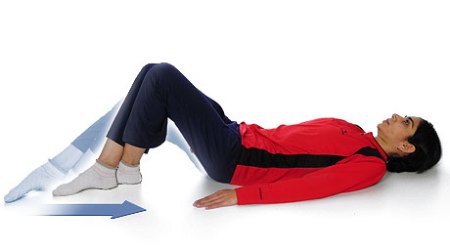
This exercise must ideally be started after a week. The exercise will calm your body and help you make secondary movement after the knee replacement surgery. To do this exercise, you must sit on your chair with back straight while bending the knees backwards as much as possible. Hold this position for 10 seconds and then return to the starting position. If you have difficulty in performing this exercise, then you can opt for a rocking chair that will help you rock your knees while your feet will gently rest on the floor. The knees will then bend and straight as you will rock on the chair. The exercise can be performed for ten repetitions at a single time and can be performed in the morning along with other exercises. You can also perform it once in the evening.
6. Sitting kicks
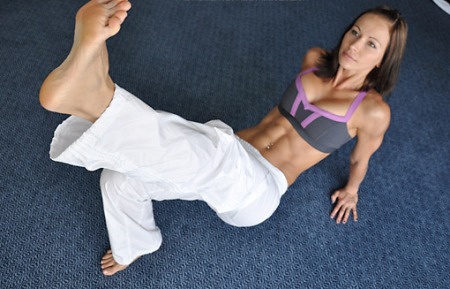
This exercise can be done along with knee bending exercise, but you need to sit on a sturdy chair instead of a rocking one. Start this exercise by sitting on a sturdy chair. Try to straighten your knees as much as possible. Hold this position for 5 seconds. Increase the hold position by about 5 seconds after the first week. Lower the leg down and relax. For many individuals, straightening out the knee in the first attempt can be difficult. So, don’t overstrain the knee and perform the exercise slowly, with increasing the straightness with every new attempt. Increase the intensity of this exercise to 30 repetitions by week 3. This exercise will enable secondary knee movements and will adjust the new knee caps. At the same time, it will encourage muscle movement.
7. Knee dangling or swinging
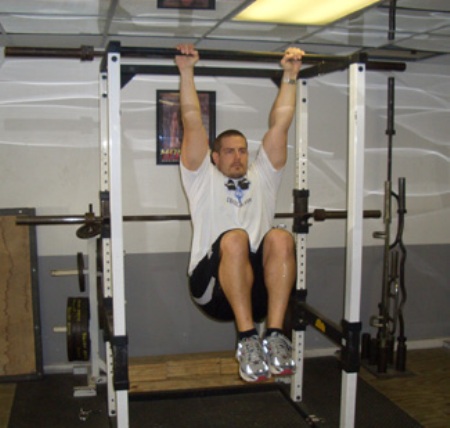
You can start this exercise after 3-4 days of your exercise regime or after you start doing sitting kicks. To perform this exercise, sit on bed. Don’t let your feet touch the floor. Keep your knees bent. Now swing your involved leg back and forth. Do the swinging in a gentle manner. Perform this exercise for about 2-3 minutes. You must complete one set of this exercise in the morning. You can try this again during your free time or at evening or night. Doing this exercise will not be challenging as by 3rd or 4th day your knee will start responding to the exercise. This exercise will help you strengthen the ligaments of knees while helping you move better.
8. Hamstring sets
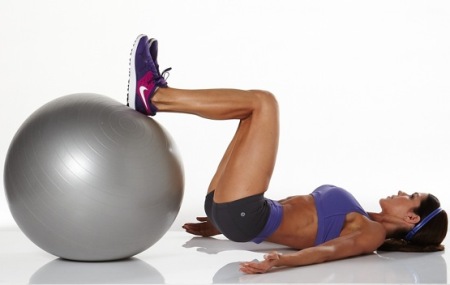
This is an optional physiotherapy knee exercise that you can perform from the second or third day after completing rest of the exercises. To perform this exercise, first bend the replaced knee a little while tightening the muscle of the back side of your thighs. Dig the heel into the bed. Remember again, the bed must not be too soft. This exercise will not be challenging if you are doing thigh squeezes each day. The exercise must be performed for 20 repetitions by the second week. You must hold the position for 5 seconds. This exercise will strengthen your calf muscles and help you move your knee in a better way. The exercise must be performed in the morning and you can repeat a set in the evening along with thigh raises.
9. Walking

Apart from the exercise program mentioned above, you must make sure that you start walking by second or third day after the surgery. You don’t need to go to a park or open area for a walk. Instead, you can walk around your home. Take a round of your home at least three to five times every day. But this should not include your trips to bathroom or kitchen. Increase the area of walk by second week and then go for longer walks by third week. This simple exercise will help your leg muscles develop the habit of working out each day while your knee will be put to its important usage. Along with this, walking will also increase the blood flow in your body which will help in faster recovery and generation of solid tendon cells. You can also try stimulation techniques which can help you to exercise better and feel healthier about your knees.


